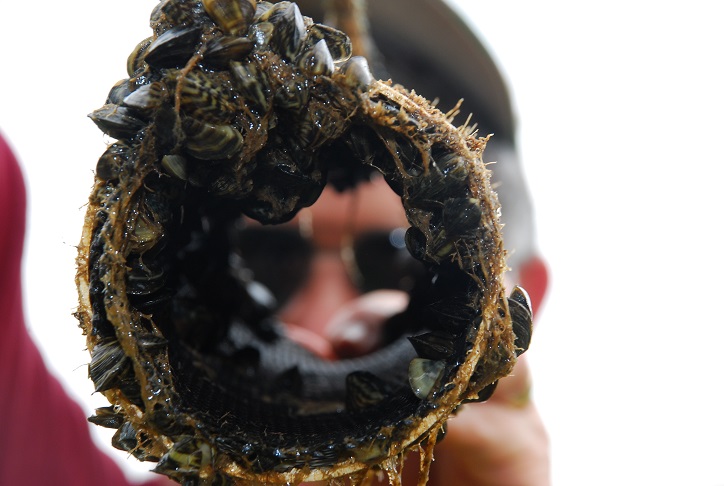Invasives: Impact of Zebra Mussels
Thursday, November 7th, 2013This is Passport to Texas
Zebra Mussels, originally from Eastern Europe, ended up in the Great Lakes in the late 1980s in the ballast of ships. Since then…
05— They’ve been pretty steadily moving across much of the eastern and central portion of the United States.
Inland fisheries biologist Brian Van Zee says zebra mussels arrived in Lake Texoma in 2009; now they occupy waters in north and north central Texas – most recently in Lake Belton.
10—They’re primarily moved from water body to water body by boaters, who don’t take the time to clean, drain and dry from an infested lake to a non-infested lake.
Zebra mussels attach to hard surfaces, including rocks, docks, boats and even other animals. As filter feeders, they impact the aquatic food chain, and clog water intake pipes of municipal utility districts, causing significant increases in maintenance and operational costs. So boaters: clean, drain and dry.
20—On a general rule of thumb, we recommend boaters dry their boats for a week before they go from one lake to the next, if at all possible. If they just pull the plug out of the bottom of the boat, lower the engines down, and make sure there’s no water in them, and make sure the live wells are empty, and open those compartments up and let them dry in between going from one lake to the next, you really reduce that risk of moving zebra mussels from one lake to another.
The Wildlife and Sport Fish Restoration Program supports our series. For Texas Parks and Wildlife…I’m Cecilia Nasti.



 Passport to Texas is a
Passport to Texas is a  Passport to Texas is made available by:
Passport to Texas is made available by: